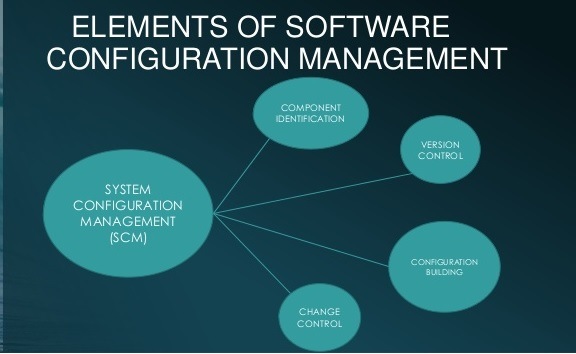SOFTWARE CONFIGURATION MANAGEMENT SYSTEM
By ADMIN| April 20, 2018
CATEGORY : BLOG | BLOG DYNAMIC | BUSINESS TRAVEL | UNCATEGORIZED
TAGS :

A software configuration management system provides solutions to various challenges faced by different roles in a development team, forming an essential part of almost any software development project. These roles include software engineers or developers, project leaders, test engineers, process engineers, managers and even executives.
It is an engineering discipline that focuses on changes. The changes are performed against configuration items such as code, tools, documents, designs or products. The primary goal of it is keep the quality and the integrity of the configuration items. Configuration management helps to identify and control changes, create baselines and audit the configuration items. It is true that almost all software development projects possess the same characters, the degree of sophistication are the differences among the projects. A high sophisticated SCM system means it must have projects with the following characteristics:
It is true that almost all software development projects possess the same characters, the degree of sophistication are the differences among the projects. A high sophisticated SCM system means it must have projects with the following characteristics:
 It is true that almost all software development projects possess the same characters, the degree of sophistication are the differences among the projects. A high sophisticated SCM system means it must have projects with the following characteristics:
It is true that almost all software development projects possess the same characters, the degree of sophistication are the differences among the projects. A high sophisticated SCM system means it must have projects with the following characteristics:- Number of skilled developers
- Project teams spread across different physical locations
- Have a good software system
- Controlled security system with complex process automation.
Configuration Management Areas:
The configuration management areas can be distinguished as:
- Management of source code:
- Standard of code.
- 100% guarantee that source code would never be lost.
- Safety of source code
- Source code iteration based baseline
- After establishing an iteration code version base line, there should be no code uploads at the ending iteration in the same branch.
- Code variants has to be branched correctly.
- Each code upload must be related to an issue
- Definition of code lines and branching.
- Build engineering:
- Compiled, linked and package code components
- Source code and compile dependencies can be easily determined
- Continuous Integration.
- The reason for broken builds is easily identified and fixed.
- Change managements:
- An update or any change in the source code should provide an impact analysis
- Specification process requirement.
- Transformation process requirement.
- Required approval of workflow
- Prioritization process required.
- Gatekeeping prevents gaining unauthorized releases from being released into another environment.
- Necessary tests done to allow the environment promotion.
- Configurations in the environment:
- Environments Definition such as Dev, QA, Integration, Prod.
- The environment configurations should be changed or updated in a more controlled and predictable way.
- After any environment changes take place, the code should be rebuilt and redeployed.
- Environment Specification.

- Release engineering:
- One can easily identify new releases.
- There should be a comparison between each and the last version with the present one.
- Releases should be packaged with all the dependencies.
- Every new release should undergo thorough automation and designing to avoid human error.
- Conducting of an audit of a new release package must take place to verify all of its configuration items.
- The contents of a release should be well understood including tracking of its requirements.
- Product version patching, approval and delivery are included in the product version process.
- Database Structure Versioning
- Database test data set Versioning
- Deployment:
- Promotion of product version.
- Proper tests should be performed to ensure a properly done deploy
- A proper procedure must take place for checking the effectively deployed versions of a release in every environment
- Deployments communication
- Deployment process per environment definition

Configuration management practices:
The configuration management practices are divided into:- Identify
- Detect
- Name
- Acquire

- Baseline
- Control
- Version Control
- Change Control
- Build Management
- Release engineering
- Audit
- Analyze baselines and processes
- Non-compliance management
- Report
- Document and notify changes
- Quality and productivity metrics
- Audit results
- Version history of configuration items
